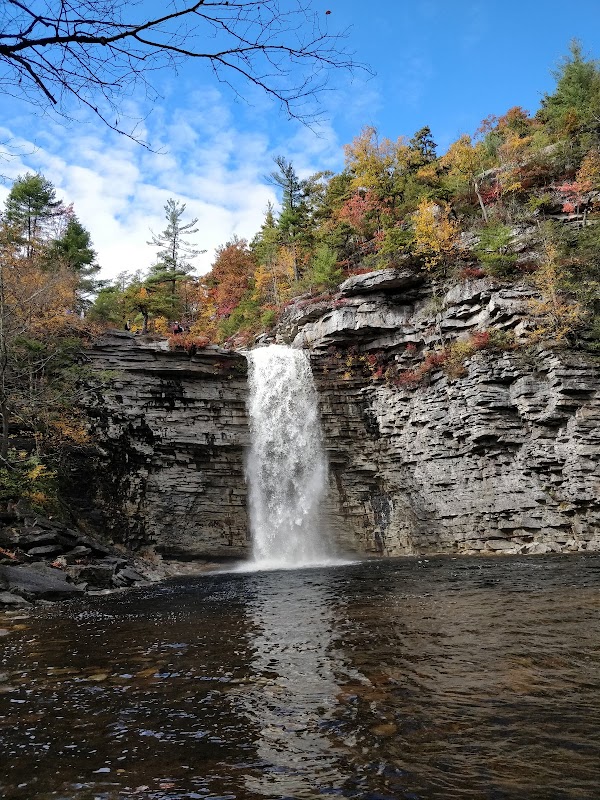
Weston Trail Runs: A Practical Guide to Connecticut’s Wooded Challenge
Weston Trail Runs present a grounded yet spirited running experience in Connecticut’s quiet woods. With moderate elevation and uneven terrain, these trails are well-suited for those seeking both challenge and the chance to move through actively breathing nature.
Wear Trail-Specific Footwear
The terrain includes roots, rocks, and occasional mud. Shoes with good traction and ankle support will keep you steady and focused.
Hydrate Before and After
There are no water stations along the trail. Carry a hydration vest to stay adequately fueled for runs lasting an hour or more.
Run Earlier or Later in the Day
Avoid midday heat and fading light. Morning or late afternoon runs offer cooler temps and softer light for a safer, more pleasant experience.
Prepare for Variable Footing
Fallen leaves can hide uneven ground and small obstacles. Step mindfully and adjust your pace to maintain balance and avoid injury.
Weston Trail Runs: A Practical Guide to Connecticut’s Wooded Challenge
For runners drawn to wooded paths and steady elevation shifts, Weston Trail Runs in Weston, Connecticut, offer a grounded yet spirited challenge. The network covers roughly 5 to 8 miles of dirt and leaf-strewn trails, weaving through dense forests where trees press close, their branches reaching out like guardians. Expect terrain that’s mostly moderate, with an elevation gain topping out around 500 feet. This isn’t a flat park loop; roots and rocks stake their claim here, pushing your focus and cadence.
Morning runs bring crisp air and the low hum of distant birds. Streams cut across trails, dare you to navigate their slippery rocks, while wind stirs thick canopies above, reminding you that nature is an active presence, never a passive backdrop. Paths twist with a purposeful complexity, inviting both seasoned trail runners and dedicated newcomers to test their rhythm and footing.
Practical preparation sets the tone for success here. Trail shoes with solid grip are essential to handle uneven soil and occasional mud patches. Hydration takes priority—water sources are not available mid-run; plan accordingly. Early spring and late fall runs reward with cool temperatures but be ready for variable footing as fallen leaves conceal dips and rocks.
Timing your run to avoid midday heat or heavy rain improves safety and enjoyment. Daylight fades quickly under thick forests, so bring a headlamp if you might trail-run near dusk. Carry a lightweight pack or vest with essentials: water, a small first-aid kit, and energy snacks.
Though the challenge is consistent, Weston’s trails reward steady effort with moments of quiet and open space. Look for a small clearing near Peak Mountain, where a sweeping view opens up to distant hills and farmland—an unexpected pause in the forest’s firm embrace.
This is a trail system that respects those who come on its terms. It doesn’t hand over easy miles but invites engagement with a force fiercely itself. For runners looking beyond paved streets or manicured parks, Weston Trail Runs blend the pulse of adventure with the utility of a well-maintained course, primed for anyone ready to move deliberately through the quiet Connecticut woods.
Nearby Trips
All Adventures
Boat Charters
Water Activities
Adventures near Weston, Connecticut
Discover the unique and memorable adventures that make Weston, Connecticut special.
Frequently Asked Questions
Are the Weston Trail Runs suitable for beginners?
Yes, while the terrain is uneven with moderate elevation gain, several loops are under 3 miles and can accommodate beginner runners when taken at a slower pace.
Is parking available near the trailheads?
Parking is limited but available at designated spots near the main trail access points off Hill Road and Glover Road. Arriving early is recommended during weekends.
Are dogs allowed on the trails?
Dogs are allowed but must be kept on a leash. Always bring waste bags to keep trails clean and respect wildlife habitats.
What wildlife might I encounter on these runs?
Runners commonly spot white-tailed deer, red foxes, and a variety of songbirds. Early morning runs increase chances to see more active creatures.
Are there marked trail loops for different distances?
Yes, the trail system is marked with color-coded blazes outlining loops of various lengths, making mileage planning straightforward for all levels.
Is winter running safe on these trails?
Winter runs are possible but require caution due to ice and snow. Proper gear like traction aids and layered clothing is necessary for safety and comfort.
Recommended Gear
Trail Running Shoes
Provides traction and stability on roots, rocks, and mud.
Hydration Vest
Necessary to carry water as no refill points are available on the trail.
Headlamp
Helps maintain visibility during early nightfall on shorter autumn days.
Insect Repellent
Protects against ticks and mosquitoes during warmer months.
Local Insights
Hidden Gems
- "Small overlook near Peak Mountain with views over Weston's farmland"
- "Quiet brook crossings where water plants seasonally bloom"
- "A rarely visited old stone wall from the 18th century lining parts of the trail"
Wildlife
- "White-tailed deer"
- "Red fox"
- "Eastern box turtle (in warmer months)"
- "Various migratory songbirds"
History
"The trails traverse former farmland and rural homesteads, with visible stone walls marking historic property boundaries dating back to the 1700s."
